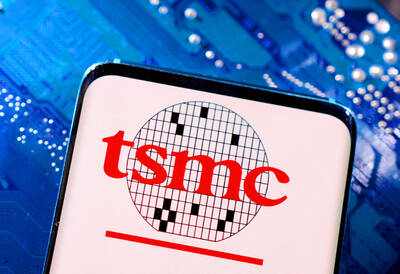LG Electronics Inc said the company aims to increase shipments of liquid-crystal-display (LCD) TVs by about 47 percent next year, driven by demand from emerging markets.
LG expects to sell 25 million LCD TVs next year, compared with about 17 million sets this year, Simon Kang, the head of LG’s home-entertainment division, said in Seoul before the IFA consumer electronics show in Berlin.
Shipments of LG’s plasma TVs will probably rise 33 percent to 4 million, Kang said.
LG follows industry leader Samsung Electronics Co in aiming to exceed the industry’s shipment growth next year.
Global LCD TV sales will rise 17 percent to 149 million sets next year, Texas-based research firm DisplaySearch said in a June 17 report. Samsung said on Friday that its shipment growth will be higher than that of the market for the period.
“Developing markets will probably have a growth rate of more than double-digits while developed countries will grow” by between 2 percent and 3 percent next year, Kang said. “There was a lot of concern at the end of last year, but things have been better than expected and we think this trend may continue.”
DisplaySearch in June raised its LCD TV industry sales forecast for this year to US$76 billion from US$66 billion and boosted the full-year LCD TV shipment estimate, citing demand from China and as more consumers replace their bulkier glass-tube sets.
LG overtook Sony Corp as the second-biggest LCD TV maker in the second quarter, helped by increased shipments to emerging markets, California-based researcher iSuppli Corp said on Thursday. Sony fell to the fourth behind Sharp Corp during the period, iSuppli said.
LG reiterated its plans to sell about 400,000 LCD TVs using light-emitting diodes (LEDs), as screen backlights instead of conventional fluorescent lights this year.

When Lika Megreladze was a child, life in her native western Georgian region of Guria revolved around tea. Her mother worked for decades as a scientist at the Soviet Union’s Institute of Tea and Subtropical Crops in the village of Anaseuli, Georgia, perfecting cultivation methods for a Georgian tea industry that supplied the bulk of the vast communist state’s brews. “When I was a child, this was only my mum’s workplace. Only later I realized that it was something big,” she said. Now, the institute lies abandoned. Yellowed papers are strewn around its decaying corridors, and a statue of Soviet founder Vladimir Lenin

UNCERTAINTIES: Exports surged 34.1% and private investment grew 7.03% to outpace expectations in the first half, although US tariffs could stall momentum The Chung-Hua Institution for Economic Research (CIER, 中華經濟研究院) yesterday raised its GDP growth forecast to 3.05 percent this year on a robust first-half performance, but warned that US tariff threats and external uncertainty could stall momentum in the second half of the year. “The first half proved exceptionally strong, allowing room for optimism,” CIER president Lien Hsien-ming (連賢明) said. “But the growth momentum may slow moving forward due to US tariffs.” The tariff threat poses definite downside risks, although the scale of the impact remains unclear given the unpredictability of US President Donald Trump’s policies, Lien said. Despite the headwinds, Taiwan is likely

UNIFYING OPPOSITION: Numerous companies have registered complaints over the potential levies, bringing together rival automakers in voicing their reservations US President Donald Trump is readying plans for industry-specific tariffs to kick in alongside his country-by-country duties in two weeks, ramping up his push to reshape the US’ standing in the global trading system by penalizing purchases from abroad. Administration officials could release details of Trump’s planned 50 percent duty on copper in the days before they are set to take effect on Friday next week, a person familiar with the matter said. That is the same date Trump’s “reciprocal” levies on products from more than 100 nations are slated to begin. Trump on Tuesday said that he is likely to impose tariffs

Taiwan Semiconductor Manufacturing Co’s (TSMC, 台積電) market value closed above US$1 trillion for the first time in Taipei last week, with a raised sales forecast driven by robust artificial intelligence (AI) demand. TSMC saw its Taiwanese shares climb to a record high on Friday, a near 50 percent rise from an April low. That has made it the first Asian stock worth more than US$1 trillion, since PetroChina Co (中國石油天然氣) briefly reached the milestone in 2007. As investors turned calm after their aggressive buying on Friday, amid optimism over the chipmaker’s business outlook, TSMC lost 0.43 percent to close at NT$1,150